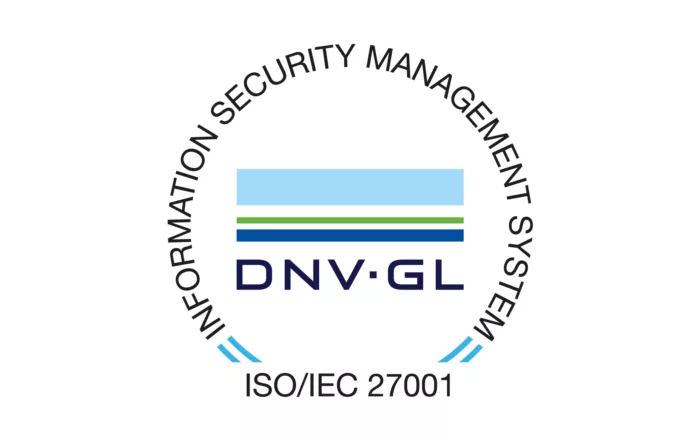Do you have high expectations of low-code development, but are you looking for a better understanding of the concept and the advantages and implications linked to it? This article delivers a deep dive to the concept of low-code development. Next to a definition, it lists the advantages and potential use-cases. Interested to give it a try? Participate in our contest and receive a free Proof of Concept for your organisation.
What is low-code development?
Low-code is a visual approach to software development. By abstracting and automating every element of the application lifecycle, the delivery process of various applications is optimized. Low-code application development is realized by using techniques such as declarative, model-driven application design and development, together with the simplified one-button deployment of applications. Since all stakeholders can collaborate in one environment, traditional barriers between business and IT are removed. This facilitates the entry of the so-called citizen developer. The result is a boost to production time and simultaneously ensures solutions meet the needs of the business.
A citizen developer is an employee who creates application capabilities for consumption by themselves or others, using tools that are not actively forbidden by IT or business units. A citizen developer is a persona, not a title or targeted role. They report to a business unit or function other than IT.
Advantages of low-code development
The advantages of low-code development demonstrate time-to-value, productivity and scalability. Enabling a new way of developing, it also opens the market to a new type of developer, providing the answer to current shortages in employees with the right skills in high-code.
Amazing Return on Investment
- Rapidly deliver apps that your business needs with the existing talent
- Improve developer productivity with low-code attributes, such as a development toolkit (based on developer experience), a visual user interface, reusable components, and more
- Enable faster decision making among cross-functional teams with baked-in collaboration tools
Build more while scaling
- Develop a variety of solutions ranging from process automation apps to mission-critical systems modernization, without incurring heavy costs
- Deliver continuous improvements to end-users with engaging web, mobile, conversational, or immersive experiences
- Build maintainable solutions that are easy to scale on cloud-native architecture
Launch a new way of developing
- Break down silos to foster a strong business-IT partnership
- Empower more developers throughout the organization to build applications and contribute
- Respond quickly to changing business and customer needs
- With less code and a simpler development path, citizen developers join the development team
When can low-code development make a difference?
With low-code development, organisations can create more powerful applications with less coding and less time. But what’s there to be built? From online portals for digitizing customer interactions to process improvement apps to new core systems development, there’s a wide range of low-code use cases:
Web-Based Customer Portal
A responsive web-based portal is a great tool to enable digital interaction with and self-service for customers. Low-code let’s business and IT collaborate and deliver portals, with consumer-grade-UI, in a fraction of the time compared to traditional development.
Core Systems
A modern core system which is cloud-native, scales easy, is highly secure with maximum availability, is a true asset to every organisation. The foundation of low-code ticks all boxes to deliver such a system with several benefits compared to Commercial off-the-shelf or high-code developments.
New SaaS Applications
Low-code enables digital transformation. Bundling years of industry experience in an app that can be sold commercially, it could completely change the business model of an organisation. It’s possible, but only if you can quickly and efficiently build, test and roll out the app.
Mobile-First Supplier Portal
A smoothly operating supply chain process is key to the success of a lot of organisations. Low-code development makes it possible to not only create a user-friendly front end, but also enables the orchestration with various backend applications.
B2C Mobile App
Customer satisfaction will get a great boost when organisations offer a digital self-service experience with a consumer-grade UI. Low-code enables the creation of fit-for-purpose mobile apps on a single platform.
Monoliths to Microservices
Low-code platforms can help phase out monoliths faster. Companies can use low-code to expedite the development of transactional microservices applications. Starting with low-risk, high-impact functionalities, companies can use APIs to re-architect monolithic apps into low-code-based microservices.
Budget Request and Approval App
Low-code enables the creation of apps, not only for primary business processes. Simple to create and maintain, apps designed for employees can boost satisfaction and increase operational efficiencies for both business and IT. UI, workflow and integrations, it’s all taken care of.
Insert Your Use Case Here
The use cases that qualify for low-code development are various and multiple. Do you have an amazing idea for your organisation, and want to have a shot at getting a free Proof of Concept in low-code? Participate to our contest and win!
The Mendix low-code platform
IRIS decided to work with Mendix as our preferred low-code platform. Being recognized as an industry leader by analysts like Gartner and Forrester, Mendix delivers an all-in-one solution for every low-code need.
Gartner predicts
“By 2024, low-code application development will be responsible for more than 65% of application development activity.”







